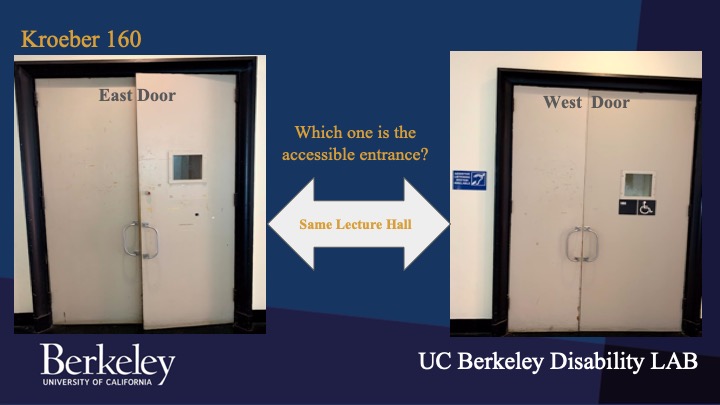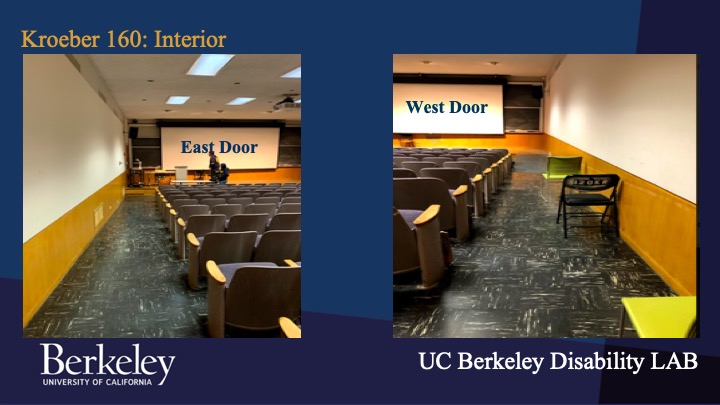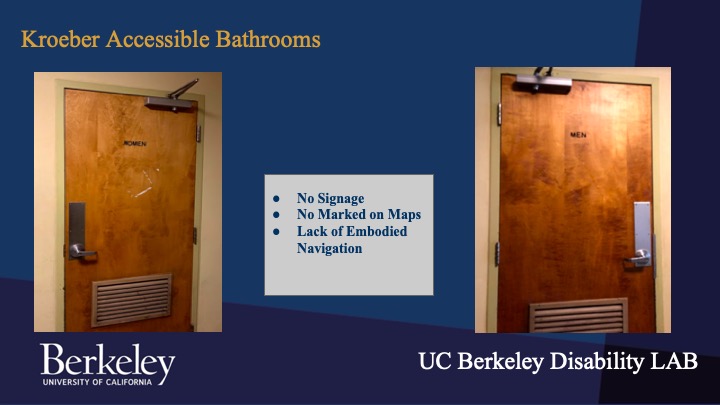Radical Mapping
═══ TEAM MEMBERS ═══
Led by Nate Tilton, the Lab Manager of RadMad Lab. Other team members include Kate Allison, Everett Woolsoncroft, and Raga Kavari.
═══ PROBLEM ═══
Accessibility for disabled students at the UC Berkeley campus is outdated, unclear, and difficult to navigate. The accessible and inaccessible doors, hallways, etc. have not been properly mapped in decades.
═══ OBJECTIVE ═══
Create a free, open-source mapping and navigation app that embodies the knowledge and ways of disabled students and professors.
The team started by identifying various pain points for the disabled population at UC Berkeley. Specifically they looked at issues with the lack of resources to navigate the campus. These issues include: lack of openness, signage and representation.
What openness essentially refers to is that the last time the campus had a big mapping project was back in the 1990s. So there is not enough information on what is accessible and what is not on campus.
There is also a dearth of signage around the campus. It creates a campus that is not open and difficult to navigate for a disabled person. An example of issues with signage was actually pointed out by UC Berkeley’s first blind professor, Prof Georgina Kleege, in an interview to the Daily Californian [Disability is a Diversity Category] . She had said that while there was braille signage right by the elevator, and on the doors of rooms, there was no signage to help the person navigate from the elevator to the room which could well be a corridor or two away on that floor.
Team leader, Nate, expanded on the idea of representation by pointing out that there are essentially two types of disabled populations at UC Berkeley:
1. The disabled professors
2. Every other disabled person on campus
Though it may not be apparent, there is a huge difference in access for both populations within the campus. It starts with different access doors and entrances for professors into the same lecture room as compared to students.
Some immediate suggestions the team has for the lack of clear signage is to 3D print or purchase signs, look at both professor and student accessibility, signs that point to accessible locations and more specific signage.
According to Nate, the project grew and evolved along the way. Meetings with Ella Callow (UC Berkeley ADA Compliance Officer) and architects (Sally Swanson & Associates and Capital Projects) have made this team’s project a part of the larger project to make a more accessible campus. The architects who are mapping the entire campus for disability/ADA compliance issues would share the data with the Radical Mapping team to use for their app.
New students will be recruited in fall to continue developing the “magic” of the app. The team also had a meeting with UBER and hope that this will help them in the development of the app.
Though there has been some pain due to the lack of access to the campus, the shut down hasn’t really impacted this group as much. Nate speaks from experience when he remarks that most projects in the lab take time to set up and the first semester is normally a good time to lay the groundwork for the project.
The team met with campus administration – Oscar Dubón, Jr (Vice Chancellor, Equity and Inclusion) and Fabrizio Mejia (Assistant Vice Chancellor, Student Equity and Success. A result of the meeting was that the team was able secure $10,000 in funding for the radical mapping project to continue.
Note: Comments are held for review before publicly posted.
On 2021-06-22 by taliyah
— Such a cool project! 😃




